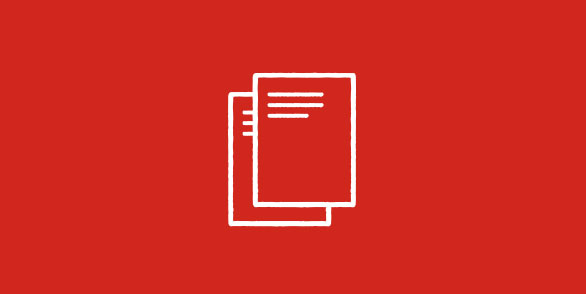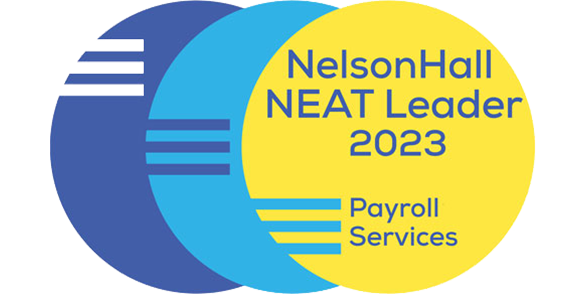It’s often said that people are an organisation’s greatest resource. Yet, until fairly recently, human resource management was not considered as critical to success as other business operations, like marketing, finance or sales. This notion has been largely altered by new technology, globalised markets and changes in organisational hierarchies. Today, business leaders place great emphasis on hiring the right people and keeping them engaged.
Table of Contents
- What is human resource management?
- What are the functions of human resource management?
- What are the responsibilities of human resource management?
- Human resource management and small business
- HRM systems and software
- Why use a human resource management system (HRMS)?
- How to choose a human resources management solution
- Why choose ADP for your human resource management needs?

What is human resource management?
Human resource management involves creating personnel policies and procedures that support business objectives and strategic plans. Central to this mission is fostering a culture that reflects core values and empowers employees to be as productive as possible.
What are the functions of human resource management?
HR functions can vary depending on industry, businesses size and the types of workers employed. In most cases, the primary objectives are to acquire and cultivate talent and improve communication and cooperation among workforce members. Other key human resource management functions include:
- Job analysis
Determining the skills and experience necessary to perform a job well may make it easier to hire the right people, determine appropriate compensation and create training programs. - Workforce operations
Creating health and safety policies, responding to employee grievances, working with labor unions, etc., can help support regulatory compliance. - Performance measurement
Evaluating performance is important because it not only fosters employee growth through constructive feedback, but also serves as a guide for raises, promotions and dismissals. - Incentive programs
Recognising achievements and rewarding high performers with bonuses and other perks is a proven way of motivating employees to take ownership of business objectives. - Professional development
From orientation to advanced educational programs, employee training serves to improve productivity, reduce turnover and minimise supervisory needs.
What are the responsibilities of human resource management?
HR professionals generally are tasked with creating and administering programs that improve workplace efficiency and employer-employee relationships. Within this broad assignment are several different, but critical responsibilities, such as:
- Staffing
Staffing a business or an individual department requires a number of key steps. Hiring managers must first determine how many new employees the budget can support, then find and interview qualified candidates, and finally, make selections and negotiate compensation. - Developing workplace policies
If it’s determined that a new or revised policy is needed, HR professionals typically consult with executives and other managers, write the supporting documentation and communicate it to employees. Policies may cover vacations, dress codes, disciplinary actions and other types of workplace protocol. - Administering pay and benefits
In order to attract and retain talent, compensation must meet industry standards and be comparable to what other employees in similar roles are being paid. Creating such a fair pay system requires careful consideration of an employee’s years of service with the business, experience level, education and skills. - Retaining talent
Compensation isn’t the only thing that retains talented employees. HR managers may need to proactively address issues with workplace environments, organisational culture and relationships between employees and supervisors. - Training employees
When employees develop new skills, they tend to be more productive and satisfied with their job. Some of the training programs typically run by HR departments include team-building activities, policy and ethics education, and on-the-job instruction and skills, e.g. how to run a machine or computer program. - Complying with regulations
Laws that affect the workplace – whether they’re related to discrimination, health care or wages and hours– are constantly evolving. HR professionals are required to keep up with these changes and notify the rest of the organisation in support of compliance. - Maintaining safety
Safety in the workplace means protecting not just the physical health of employees, but also their private information. To minimise workers’ compensation claims and data breaches, HR must implement security measures and ensure that all federal, state and union standards are met.
Human resource management and small business
While human resource management is important to all businesses, the stakes may be higher for smaller organisations. For example, one incompetent employee in an office of 10 people can be much more detrimental than one in a workforce numbering in the thousands. To improve their people processes, small business owners generally can:
- Assess current operations to determine if new hires are needed or if existing employees and production methods can be utilised more effectively.
- Take an active role in the recruitment process and write job descriptions that match prospective talent to business needs.
- Create an employee handbook or an official document that clearly outlines company policies.
- Provide continuing education opportunities as needed by the particular industry.
- Maintain a work environment where employees are treated fairly and can be productive.
HRM systems and software
Faced with rising numbers of contract-based workers and increasingly complex regulations, HR professionals have turned to HRM software to help them keep pace with changing workforce environments and people management needs. This technology is available with a variety of options to suit businesses of any size. Basic systems may offer recruitment services, payroll and benefits, while more robust HRM solutions tend to include talent management, international compliance support and advanced analytics.
Why use a human resource management system (HRMS)?
HRMS are designed to meet the core needs of HR and turn basic administrative functions into critical enablers of business value. With the aid of these people-centric, data powered solutions, HR managers may be able to:
- Improve their hiring processes
- Manage people more effectively
- Optimise workforce productivity
- Engage and retain employees
- Eliminate costly redundancies
- Make data-driven decisions
- Maintain regulatory compliance
How to choose a human resources management solution
Finding the right solution often requires a strategic evaluation process, such as the following:
- Identify what the organisation would like to accomplish, change or improve and how technology can help achieve those goals.
- Ensure that the HRMS can keep pace with the rapidly changing regulatory and statutory requirements in all applicable jurisdictions (local, state, federal, international, etc.).
- Prioritise security and know exactly how sensitive data will be stored, transferred and backed up.
- Look for implementation models with a change management strategythat will get the HRMS up and running efficiently.
- Address stakeholder questions, concerns and objections to drive widespread HRMS support.
- Ask about service plans to manage the hundreds of post-payroll tasks necessary for compliance.
- Inquire into the vendor’s financial history and investments in innovation.
- Get outside-in perspective by looking at peer reviews, industry analyst feedback and product demos.
Examples of HRM software
Business leaders and HR professionals who are looking for software to help them accomplish more with less resources generally have three options available to them:
- Human resource information systems (HRIS)– perform core HR functions, like applicant tracking, payroll and benefits administration
- Human resource management systems (HRMS)– offer the benefits of HRIS, plus talent management services
- Human capital management (HCM) solutions– provide a broad suite of HR capabilities, including global payroll and compliance support and in-depth analytics
Why choose ADP for your human resource management needs?
ADP’s HR management solutions automate and streamline key needs so that HR professionals can focus more time on their people and less on paperwork. We offer basic and customised packages with some of the following features:
- Powerful workforce reporting that turns data into a trusted source of decision-making
- Preconfigured new hire templates for a simplified onboarding process
- Self-service and mobile apps so time-sensitive tasks can be performed quickly
- Industry-recognised security to help safeguard sensitive information



